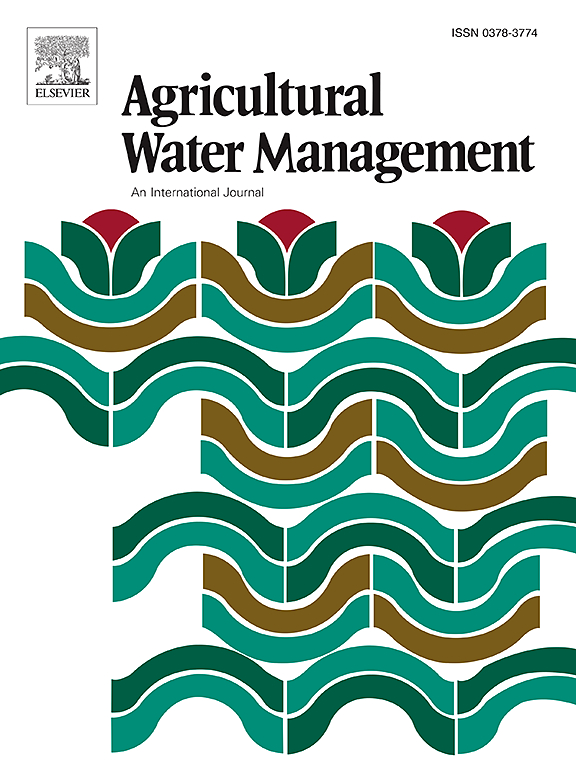The productivity anomalies and economic losses of different grassland ecosystems caused by flash drought
IF 5.9
1区 农林科学
Q1 AGRONOMY
引用次数: 0
Abstract
Flash drought has attracted worldwide attention in recent years because of its destructive effects on ecosystems. However, the research on ecosystem loss caused by flash drought is insufficient. In this study, a basis for further understanding of the impact of flash drought on grassland was developed, and a method was established for quantitatively assessing productivity and economic losses in various types of grassland impacted by different levels of flash drought. The results showed that grassland productivity anomalies, productivity loss, and economic loss caused by flash drought vary with grassland type, flash drought type, and flash drought stage. During flash drought, the average NPP loss rate (NPPLR) is >60 %; and the minimum daily economic loss is >1200×106 yuan. In the early stage of mild drought, flash drought can cause the NPPLR to exceed 50 %, and the NPPLR increases significantly with increasing flash drought intensity. Flash drought-induced losses occur primarily in summer. The productivity anomalies, productivity loss and economic loss are greatest in meadow grassland, with the lowest values in desert grassland. Meadow grassland productivity suffers severe losses in almost all flash drought stages. The main stages causing flash drought-induced losses are mild drought in typical grassland and severe and extreme drought in desert grassland. The productivity and economic losses caused by strong evapotranspiration flash drought (SEFD) are greater than those caused by heat wave flash drought (HWFD), and SEFD is more likely to cause productivity loss. The flash drought-induced direct economic loss in grassland is higher than the indirect economic loss and the investment premium loss. In addition to agriculture and animal husbandry, flash drought has the greatest impact on the chemical products industry. The flash drought-induced losses of grassland ecosystems will continue to increase in the future.
山洪暴发干旱对不同草地生态系统造成的生产力异常和经济损失
近年来,闪旱因其对生态系统的破坏性影响而引起了全世界的关注。然而,对闪旱造成的生态系统损失的研究还很不够。本研究为进一步了解闪旱对草地的影响奠定了基础,并建立了定量评估受不同程度闪旱影响的各类草地生产力和经济损失的方法。结果表明,闪旱造成的草原生产力异常、生产力损失和经济损失随草原类型、闪旱类型和闪旱阶段的不同而变化。在闪旱期间,平均净生产力损失率(NPPLR)为 60%,最低日经济损失为 1200×106 元。在轻度干旱初期,闪旱可导致 NPPLR 超过 50%,并且随着闪旱强度的增加,NPPLR 显著增加。闪旱造成的损失主要发生在夏季。草甸草原的生产力异常、生产力损失和经济损失最大,荒漠草原的数值最低。草甸草原的生产力几乎在所有干旱阶段都遭受严重损失。造成闪旱损失的主要阶段是典型草地的轻度干旱和荒漠草地的严重和极端干旱。强蒸散闪旱(SEFD)造成的生产力和经济损失大于热浪闪旱(HWFD),且强蒸散闪旱更容易造成生产力损失。闪旱造成的草地直接经济损失高于间接经济损失和投资溢价损失。除农业和畜牧业外,闪旱对化工产品行业的影响最大。未来,闪旱对草原生态系统造成的损失将继续增加。
本文章由计算机程序翻译,如有差异,请以英文原文为准。
求助全文
约1分钟内获得全文
求助全文
来源期刊

Agricultural Water Management
农林科学-农艺学
CiteScore
12.10
自引率
14.90%
发文量
648
审稿时长
4.9 months
期刊介绍:
Agricultural Water Management publishes papers of international significance relating to the science, economics, and policy of agricultural water management. In all cases, manuscripts must address implications and provide insight regarding agricultural water management.
 求助内容:
求助内容: 应助结果提醒方式:
应助结果提醒方式:


